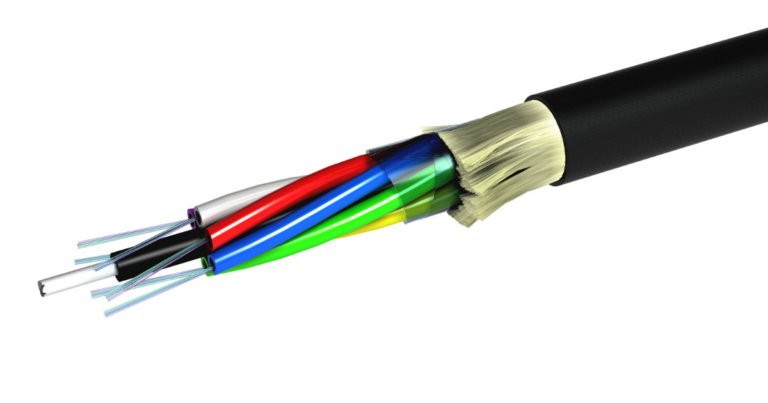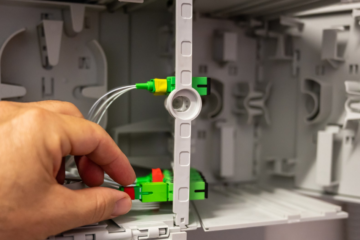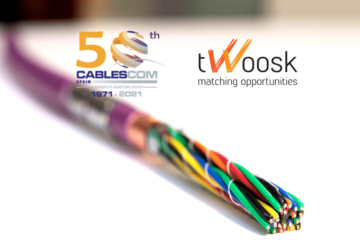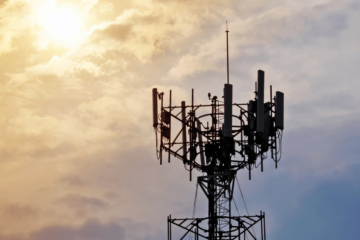
A fiber optic cable is the most effective way to transmit information. Pulses of light travel along the fiber for a certain distance and in a certain broadband that supports the speed of communications.
This distance and speed are the key factors when choosing the fiber optic cables types to use.
There are two main types of optical fiber used in communications: Multimode and Single mode.
Multimode fiber
The multimode fiber uses a Led or laser-based light to fill the core in multiple beams of light (modes). And as it has a large core, 62,5µm or 50µm, the different modes enter the fiber with different angles, making the same pulse to spread along with the fiber. If the pulses are too close or the fiber is too long, it makes the spread so great that is very difficult to distinguish a pulse from the next.
The multimode fiber is classified into 5 categories:
OM1: 62,5µm core
– Construction in step Index
– Low transmission rates (100Mb/s up to 2000mts or 10Gb/s up to 33mts)
– Led light source
OM2: 50µm core
– Construction in step Index
– Low transmission rates (100Mb/s up to 2000mts or 10Gb/s up to 82mts)
– Led light source
OM3: 50µm core
– Construction in Graded Index
– Low transmission rates (100Mb/s up to 2000mts or 10Gb/s up to 300mts)
– Can transmit 40Gb/s or 100Gb/s using multifiber up to 100mts
LED or VSCEL (vertical-cavity surface-emitting laser) light source
OM4: 50µm core
– Construction in Graded Index
– Low transmission rates (100Mb/s up to 2000mts or 10Gb/s up to 550mts)
– Can transmit 40Gb/s or 100Gb/s using multifiber up to 150mts
– Optimized for VSCEL light source
OM5: 50µm core
– Construction in Graded Index
– It can support up to 4 WDM channels
– Each channel can transmit 28Gb/s between 850 and 953nm
– VSCEL light source
We can resume the Multimode characteristics in this table:
|
Physical characteristics |
|||||
|
Fiber type |
Core |
Jacket |
Light source |
wavelength |
|
|
OM1 |
62.5/125µm |
Orange |
LED |
200MHz*km |
|
|
OM2 |
50/125µm |
Orange |
LED |
500MHz*km |
|
|
OM3 |
50/125µm |
Aqua |
VSCEL |
2000MHz*km |
|
|
OM4 |
50/125µm |
Violet |
VSCEL |
4700MHz*km |
|
|
OM5 |
50/125µm |
Lime Green |
VSCEL |
28000MHz*km |
|
|
Transmission characteristics |
|||||
|
Fiber Type |
100Mb/s |
1Gb/s |
10Gb/s |
40Gb/s |
100Gb/s |
|
OM1 |
2000m |
275m |
33m |
/ |
/ |
|
OM2 |
2000m |
550m |
82m |
/ |
/ |
|
OM3 |
2000m |
550m |
300m |
100m |
70m |
|
OM4 |
2000m |
550m |
550m |
150m |
150m |
|
OM5 |
/ |
/ |
550m |
150m |
150m |
Due to the large core, this fiber is easier to terminate, fuse and connect, and the light sources are less expensive than laser.
Single mode fiber
The Single mode fibers use a LASER source of light to project a single beam to the core of the fiber. As it has a single beam of light the dispersion of light is negligible. That means that we can transmit at long distances and high frequencies.
There are two categories for Single mode fiber: OS1 and OS2. The OS1 fiber is compatible with ITU G652 A, B, C and D, and the OS2 is only compatible with G652C and D (low water peak), and it lowers the attenuation from 1dB/Km on OS1 to 0,4 dB/Km on OS2 witch makes it perfect for CWDM (Coarse Wavelength Division Multiplexing) applications.
Characteristics:
– Construction in Step Index
– Single ray of light
– Transmission between 1250nm and 1625nm
– Allows splitting and multiplexing (WDM, DWDM, CWDM)
– Light source: LASER (Light Amplified by Stimulated Emission of Radiation)
– High communication rates and long distances
– Maximum bite rate: Not yet achieved
What fiber optic cables types should you choose?
So, considering the differences in the types of fiber the best choice depends on the distance and speed of the data transmitted. If the need is 100Mb/s and under 500mts distance, the OM2 fiber can be a solution, but we should also consider the future need to expand to 1Gb/s or even 10Gb/s.
In a multimode type of fiber the lowest category recommended is OM3, even if OM2 could be sufficient for the actual needs.
If the distance is bigger than 300mts the solution recommended is Singlemode, regardless of the bitrate.
Fiber optic cables types chosen. What’s next?
After choosing the right type of fiber we need to choose the number of fibers in the cable. And that depends on the equipment that is going to use the fibers in the cable.
The same equipment uses a duplex connection and needs two fibers (TX and RX), others use a single fiber in both directions.
The recommended cable is the sum of all the fibers predicted multiplied by 2. So, if we will use 12 fibers, the selected cable must have at least 24 fibers.
Related articles: Basics to Help You Know Everything About Fiber Distribution Box










It’s interesting to know about fiber optic cable types and how to choose the best ones for us. The other day, my cousin mentioned she’s interested in installing a fiber optic system to improve her internet speed, so I’ll make sure she reads your post. Thank you for the tips on considering the speed and distance of the data transmitted when selecting fiber optic cables.